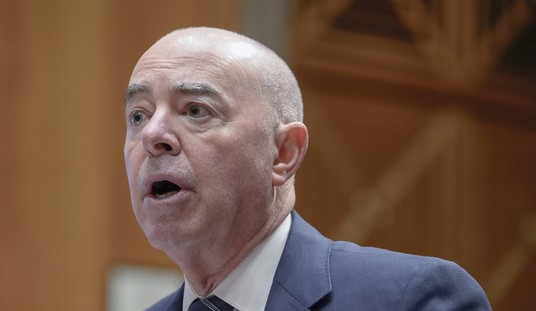Apple announced its new product lineup today in a huge live event from their new spaceship-like headquarters in Cupertino, California. Here’s a rundown of what’s new and significant and how it matters to you.
A new Apple Watch with a built-in phone
The new Apple Watch 3 now offers a built-in cellular phone that lets you make and receive calls all on its own. This is significant because it can change how we use our phones. It means we can leave our phones at home or in a pocket or purse. This has been the dream of science fiction writers for decades. The watch uses the same cellular number as your iPhone; think of it as an extension.
The new Series 3, which adds other health-related functions and a faster processor, starts at $399 with cellular plus $10/mo. from AT&T, Verizon, or T-Mobile.
A version without cellular will cost $329, and the original Series 1 will drop to $249. The Apple Watch 3 model looks the same as older models except for a large red dot on the knob on the side.
Cell phone capability is the killer app everyone has been waiting for on the Apple Watch and it adds a lot of convenience never available before. What was left unanswered: How good is the reception, how’s the call clarity, and what’s the effect on the battery life? That will all need to wait for detailed reviews.
Apple TV
Apple introduced a new higher resolution 4K version of its Apple TV. It’s not an actual TV, but a box for connecting your TV to various movie and entertainment services. Nothing significant here, other than Apple trying to catch up to its competitors. $179.
iPhones
This was the biggest announcement and the most important, because it represents most of Apple’s sales and profits. As predicted, three phones were introduced, the iPhone 8, the iPhone 8 Plus, and the iPhone X.
The first two are evolutions of their current iPhone 7 and 7 Plus models with the same size displays and home button that doubles as a fingerprint reader. There are some cosmetic changes, including a glass back and aluminum trim, but for the most part, they look and work similarly to the 7 series.
As with each succession, improvements are mostly internal, with incremental improvements to the camera, speakers, and processor. They now support wireless charging, allowing the phones to be placed onto a powered charging plate and recharge without the phone needing to be plugged in.
The 8 Plus, with the larger screen, also has the best camera, still using two separate cameras on the back, but now offering special software to take better portraits by adjusting the light on each part of the face.
The phones add a special graphics processor (GPU) to facilitate the use of new apps with augmented reality. AR adds computer-created images to the real images seen by the camera. An example shown was using the phone at a baseball game and seeing the players’ statistics superimposed. Another app lets you hold the iPhone up to the sky to see the constellations labeled.
While these new features were impressive, what was left unsaid is what most of us care about. Will the battery life be improved? Adding a faster processor and new features often reduce battery life. Again, we’ll have to wait for the reviews.
The iPhone 8 and 8 Plus will be available with 64 GB and 128 GB of memory. 64 GB versions will cost $699 and $799. You can order them beginning Friday, and they’ll be available a week later. A new software release will be available for all iPhones on September 19.
The really big news is the third phone to be introduced, the iPhone X (X meaning 10), positioned as the phone that will pave the way for iPhones of the future. The iPhone X dispenses with the home button and has a more elongated rectangular display that fills the phone’s face. There are no wide bezels above and below the screen. It has a glass back and a polished stainless steel band that wraps around the edges. It’s the first iPhone with an OLED display that provides sharper and more contrasty images. The new form factor packs in a larger display without making the phone unwieldy to hold. (Think of a phone the size of an iPhone 7 with a screen the size of an iPhone 7 Plus.)
The iPhone X’s biggest feature, one that Apple rolled out with great fanfare, is its 3D face sensor, used to unlock the phone. It replaces the fingerprint sensor and home button used on its other models. Essentially, it scans and examines your face and unlocks the phone once it recognizes you. Its technology is more advanced than competitive models that could be fooled by a picture being held up to the phone.
The Apple design uses sensors and infrared light to illuminate and map your face with invisible light, and create a contour map to ensure it’s you. In their description, it was noted that over 1 billion pictures were taken during its development to perfect the design. I’m not sure if that should be seen as impressive or sad. Why? While it’s quite a technical achievement, it probably doesn’t matter a whole lot in our daily usage. Frankly it’s hard to improve upon a password that you can give to your spouse if you were unable to use your phone or left it at home.
What was not clear is whether the absence of a home button will add to the complexity of using the phone. If you’re used to the iPhone and iPad working much alike, the X will be quite different.
The iPhone X will ship on November 3, and orders begin October 27. It will be priced from $999.
How to assess?
Apple excels at introducing new products in a unique environment and with a fervor that makes you want to run right out and get in line at your nearest Apple store. That was the effect Steve Jobs had, and a formula Apple has stuck with in the age of Tim Cook. But if you take away the hyperbole, the stunning presentations, and a few of the over-the-top claims, you can’t help but notice that, with the 8 and 8 Plus, the iPhones are incrementally improved over the current models, or, in the case of the iPhone X, a gorgeous design packed with new technology, but with many similarities to the Samsung S8.
Still, no one does products better than Apple, and the phones will continue to sell millions each month and make lots of money for the company. The good news is we don’t have to buy a new phone every year or two to have the features we really need. If I were to buy a new iPhone (because my old one was unreliable and beyond repair) I’d likely opt for the 8 or 8 Plus, because the fingerprint sensor and home button are so well thought out and easy to use. While the face sensor is an interesting technical accomplishment, it will take longer and require more steps to unlock the phone. And it failed to work the first time in today’s demo.









Join the conversation as a VIP Member